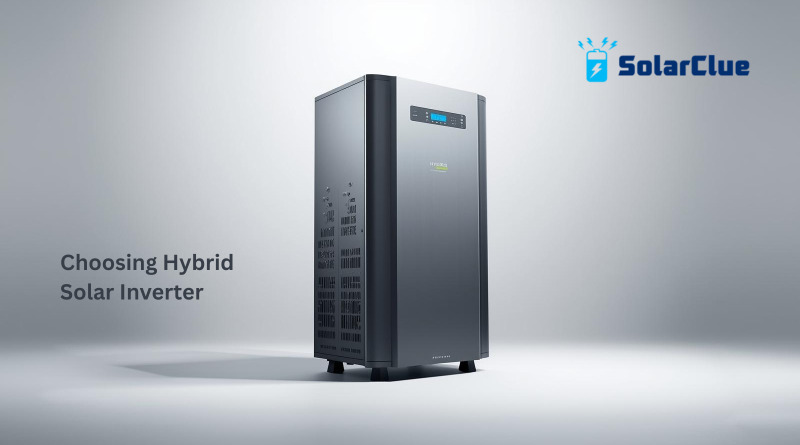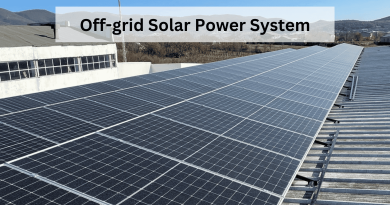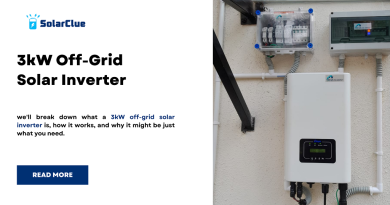Key Parameters While Choosing A Hybrid Solar Inverter
With solar adoption rising worldwide, homeowners and businesses are increasingly opting for hybrid solar inverters. Unlike traditional inverters, hybrid models integrate both solar PV and battery storage, enabling users to draw power from panels, batteries, or the grid seamlessly.
However, with numerous models available in the market, choosing the right hybrid inverter can be overwhelming. This guide explores the key parameters to consider when selecting a hybrid solar inverter, ensuring maximum efficiency, reliability, and long-term value.
Table of Contents
- 1 What is a Hybrid Solar Inverter?
- 2 Key Parameters to Consider
- 2.1 1. Power Rating and Capacity
- 2.2 2. Efficiency Levels
- 2.3 3. Battery Compatibility and Voltage Range
- 2.4 4. MPPT Technology and Solar Input
- 2.5 5. Grid Connectivity and Net Metering Support
- 2.6 6. Backup Time and Load Handling
- 2.7 7. Safety Features and Protections
- 2.8 8. Smart Monitoring and IoT Integration
- 2.9 9. Build Quality and Warranty
- 2.10 10. Cost vs. Long-Term Value
- 3 Practical Tips Before Buying a Hybrid Solar Inverter
- 4 Conclusion
What is a Hybrid Solar Inverter?
A hybrid solar inverter is a multi-functional device that:
- Converts DC power from solar panels into AC for household or business use.
- Stores excess energy in batteries for later use.
- Provides grid connectivity, allowing export of surplus energy under net metering policies.
- Acts as a backup power source during grid outages.
This flexibility makes hybrid inverters a popular choice for areas with unstable grid supply or high electricity costs.
Key Parameters to Consider
1. Power Rating and Capacity
The power rating (in kW or kVA) determines how much load the inverter can handle.
- Small homes: 3–5 kW hybrid inverters
- Medium homes/businesses: 5–10 kW
- Large setups/industries: 10 kW+
Always choose an inverter that can handle peak load demand while leaving room for future expansion.
2. Efficiency Levels
Efficiency measures how well the inverter converts DC to AC.
- Standard hybrid inverters: 92–95%
- Premium models: 97%+
Higher efficiency means less energy loss and better returns on investment. Look for inverters with Euro efficiency ratings, which reflect real-world performance.
3. Battery Compatibility and Voltage Range
Battery support is critical for hybrid inverters. Check for:
- Lithium-ion vs. Lead-acid compatibility
- Voltage range flexibility (48V, 96V, or higher systems)
- Support for battery management systems (BMS)
Lithium-ion batteries are costlier upfront but offer longer lifespans, faster charging, and higher efficiency.
4. MPPT Technology and Solar Input
Modern hybrid inverters use Maximum Power Point Tracking (MPPT) to optimize energy harvest.
- Single MPPT: Suitable for small, uniform rooftop installations.
- Dual/Multiple MPPT: Ideal for rooftops with different orientations or shading issues.
Ensure your inverter supports the solar input voltage and panel capacity of your system design.
5. Grid Connectivity and Net Metering Support
If you plan to sell surplus energy:
- Choose an inverter certified for grid connectivity.
- Verify net metering compatibility with your local electricity board.
- Some hybrid inverters offer zero-export functionality, useful where feed-in tariffs are restricted.
6. Backup Time and Load Handling
Hybrid inverters double as backup power systems.
- Check the maximum load capacity on backup mode.
- Some models only support essential loads during outages.
- Estimate battery size vs. backup hours needed (e.g., 5 kWh battery ≈ 4–6 hours for essential appliances).
7. Safety Features and Protections
A reliable hybrid inverter must include:
- Overload and short-circuit protection
- Over/under voltage safeguards
- Surge protection for grid fluctuations
- Temperature monitoring to prevent overheating
Safety compliance certifications (CE, IEC, BIS, etc.) ensure long-term durability.
8. Smart Monitoring and IoT Integration
Today’s best hybrid solar inverters offer digital connectivity features:
- Remote monitoring via mobile apps or web dashboards
- Real-time insights on solar generation, consumption, and battery health
- Alerts for faults or underperformance
Such smart features help maximize system uptime and efficiency.
9. Build Quality and Warranty
The inverter is the heart of a solar system and must last 8–12 years.
- Look for IP65 or higher enclosures for outdoor installations.
- Standard warranties: 5 years (extendable to 10 years on premium models).
- A reliable after-sales service network is just as important.
10. Cost vs. Long-Term Value
Price is important, but cheapest isn’t always best.
- Compare not just upfront cost, but also efficiency, lifespan, and warranty.
- A premium inverter with higher efficiency can pay back faster by reducing energy losses.
Practical Tips Before Buying a Hybrid Solar Inverter
- Get a professional load analysis to size your inverter correctly.
- Check compatibility with your solar panels and battery storage.
- Ask for local approvals if you plan to use net metering.
- Choose reputed brands with strong after-sales service in your region.
Conclusion
Selecting the right hybrid solar inverter is critical for achieving maximum efficiency, cost savings, and reliable backup power. By carefully considering factors such as capacity, efficiency, battery compatibility, MPPT features, safety standards, and smart monitoring, you can ensure a future-ready solar investment.
In short, the ideal hybrid inverter should not only meet your current energy needs but also adapt to future expansion and evolving technologies.



